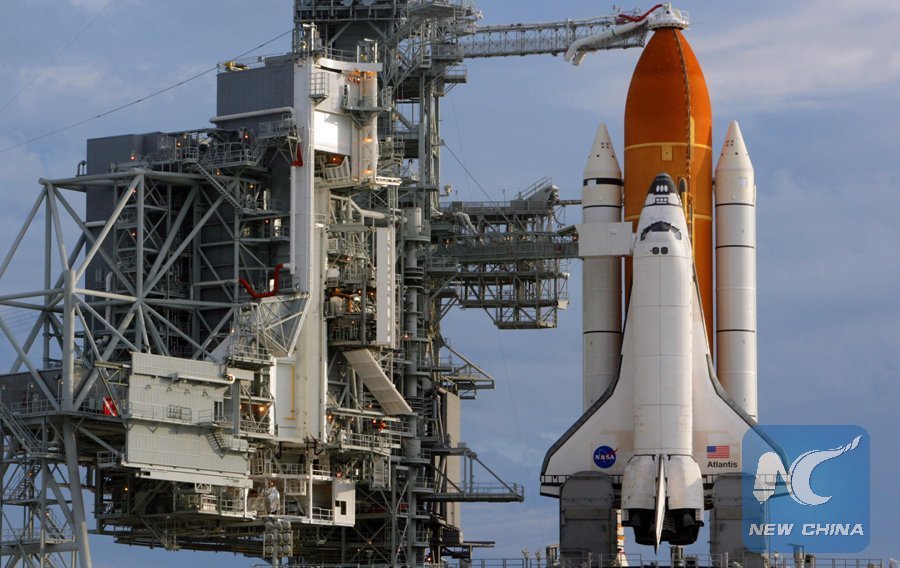
The U.S. Space Shuttle Atlantis sits on launch pad at the Kennedy Space Center in Cape Canaveral, Florida of U.S., June 8, 2007. Atlantis is expected to carry a crew of six astronauts later on Friday on Mission STS-117 to the International Space Station. (Xinhua/Hou Jun)
WASHINGTON, Jan. 13 (Xinhua) -- Astronauts aboard the International Space Station on Friday successfully completed a battery upgrade to the outpost's power system in their second spacewalk in just one week.
American astronaut Shane Kimbrough and Thomas Pesquet of the European Space Agency, a first-time spacewalker, concluded their spacewalk at 12:20 p.m. EST (17:20 GMT), about a half hour earlier than originally planned.
During the nearly six-hour spacewalk, the duo "successfully installed three new adapter plates and hooked up electrical connections for (the remaining) three of the six new lithium-ion batteries on the International Space Station," U.S. space agency NASA said in a statement.
The new lithium-ion batteries and adapter plates replace the 12 nickel-hydrogen batteries currently used on the station to store electrical energy generated by the station's solar arrays, it added.
Compared with the older nickel-hydrogen batteries, the new ones are lighter, smaller, and have an improved power capacity.
NASA said additional nickel-hydroge batteries will be replaced as part of this power upgrade over the next couple of years as new batteries are delivered to the station.
It also said the three new batteries installed on Jan. 6 during the first spacewalk with Kimbrough and his American counterpart Peggy Whitson are "functioning properly and all electrical loads are being routed normally to systems through that power channel."
Prior to each spacewalk, ground controllers have used the Canadian-built robot called Dextre to move the new lithium-ion batteries into their ordered slots and remove the older ones.
In all, nine of the older batteries will be stowed in a Japanese cargo resupply craft that is expected to depart the station later this month and burn up in the Earth's atmosphere. Three others remained on the station's truss, disconnected from the power grid.
During Friday's spacewalk, astronauts were also able to accomplish" several get-ahead tasks" including stowing padded shields from one note outside of the station to make room inside the airlock and taking photos to document hardware for future spacewalks, NASA said.
This is Kimbrough's fourth spacewalk and Pesquet's first. Pesquet tweeted about his excitement on Thursday: "Tomorrow's a big day: better bring our A-game, to be safe & efficient."

